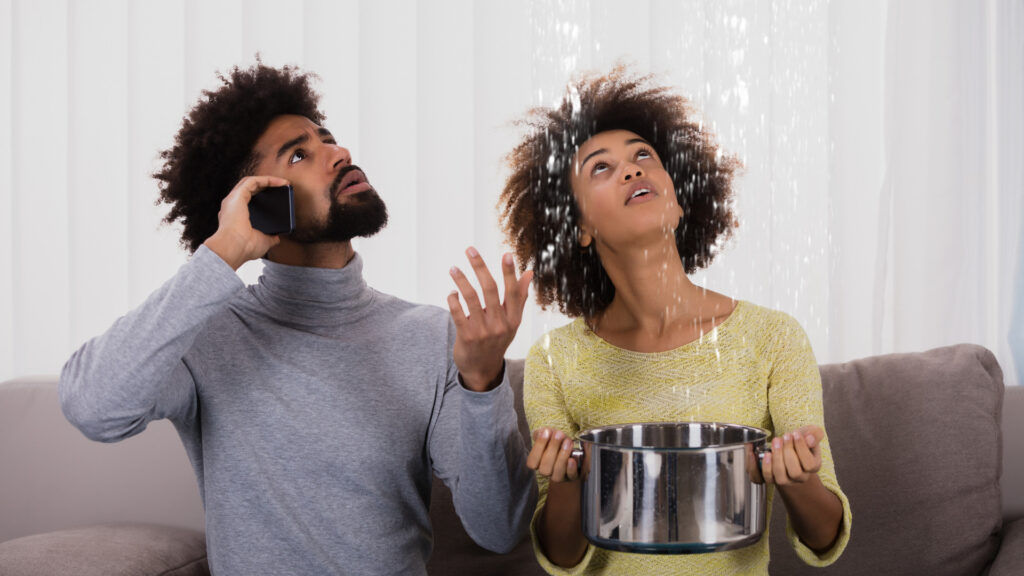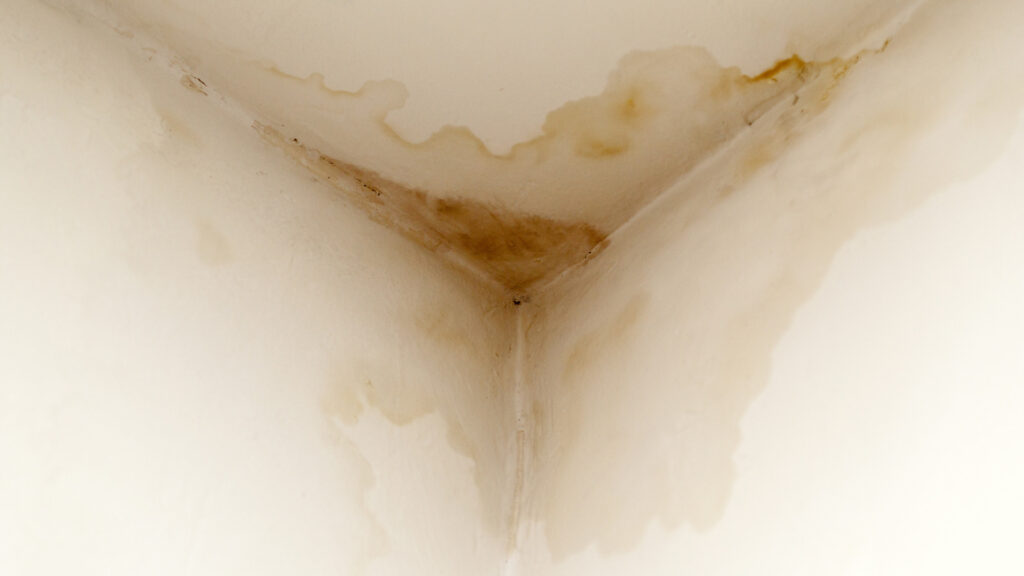Table of Contents Show
RV water damage: three words no RVer wants to hear. But what is RV water damage, and why is it such a big deal in the first place? Well, it can have a significant impact on your health and the structural integrity of your RV.
Today we’re taking a deep dive into RV water damage: what it is, how to find it, key things to look for, and how to prevent it in the first place.
What Is RV Water Damage?
RV water damage is the result of water getting into an RV for an extended time. Moisture in an RV causes many issues, most notably rotted wood and mold.
It’s a silent killer in the RV industry because you rarely know you have a leak until it’s too late. Water damage can essentially total an RV because the price of fixing it is more than the value of the RV itself.
Rotting wood can cause structural problems, but mold can also pose a major hazard to human and animal health.
What Causes RV Water Damage?
Leaks on the exterior or in the plumbing can cause water damage in an RV, usually over a long time.
Since water damage means rotted wood and mold, it takes a pretty long time to occur. One instance of water spilling out of the shower or getting in through an open roof vent won’t damage the wood.
But, when an RV leaks and water accumulates in the walls or under the floor for an extended time and can’t fully dry out, it causes major issues.
Leaks can happen anywhere at any time. Many things can cause leaks in your RV. A tree branch may scrape your roof membrane when pulling out of an RV site. Your RV sealant may go bad, crack, or shrink around your rooftop AC, vents, or windows.
Additionally, you can have splitting seams due to age and wear and tear that you didn’t inspect. Your RV plumbing system may have a crack or improper joint in the walls or under the floor.
Furthermore, damaged or dirty RV slideout seals can also let water in. You may have a cracked shower pan resulting in water pooling under the shower.
Finally, a leaky toilet pedestal or leaky toilet plumbing can also cause damage.
This is not an exhaustive list of what causes leaks, but these are some of the most common causes of water damage.

Will RV Insurance Cover Water Damage?
Regular RV vehicle insurance won’t cover water damage. This is one of the most significant issues plaguing the used RV market today, and it costs a lot of money to fix. It’s not a surprise that regular RV insurance won’t cover it.
Some comprehensive RV insurance policies will cover water damage, but it’s not that simple. For example, some packages will cover water damage if it occurs in specific situations, like damage from a storm, but not from a leak that occurred over an extended period.
Most insurance policies have exclusions, such as water damage caused by owner negligence or manufacturing defects.
And, we hate to say it, but water damage is due mainly to a lack of regular maintenance.
To find out if your RV insurance policy has water damage coverage, speak to a representative. Find out what type of coverage you have because not all RV water damage coverage is the same.
Signs Your Camper Has Water Damage
There are some obvious telltale signs that your camper has water damage. But, as we said before, you often don’t know you have a leak or water damage until the problem is extensive.
Some key signs of water damage include things like soft spots on the floor or walls, discoloration on the ceiling or walls, or the smell of mildew.
Some water damage is glaringly apparent, and sometimes you won’t even know you have it until you make an unrelated repair or renovation.
Inspect These Places First
Here are the top places to check to inspect for RV water damage and leaks. If you’re in the market for a used RV, be sure to do a thorough inspection for this issue.
Check for Soft Spots in the Floor Near Sinks, Windows, Toilet, and Shower
When you walk through the RV, check for soft spots all over, but most notably around areas like sinks, the shower, and the toilet. Check the floors for weak spots under and around all windows and slideouts.
A soft spot on an RV floor or wall feels spongy or bouncy. It might feel like it sinks under you. In severe cases, your foot can go through the floor entirely, so use caution. If you find a soft spot, avoid stepping on it with your full weight.
Check for Soft Spots in the Wall Around Windows
Use your hands and push on the RV walls around windows, slideouts, and seams. If water has gotten into the wall consistently, it will cause soft spots like those you might find on the floor.

Check for Soft Spots, Discoloration, or Mildew on the Ceiling Around Appliances and Seams
Use your hands to press on the RV ceiling around the edges, corners, and especially around any cutouts. Press around any roof fan vents, rooftop AC units, and skylights.
Discoloration and mildew on the ceiling can signify a leak — a precursor to water damage.
Check Ceilings in Cabinets and Corners
Water damage often goes unnoticed inside cabinets. When doing a water damage inspection, open the ceiling cabinets and look for discoloration in the ceiling, soft spots, or a mildew smell.

Check Flooring in Cabinets with Plumbing
Another spot RV water damage goes unnoticed is in the floor cabinets and storage bays. Rain leaks don’t cause all water damage. You may have leaks in your plumbing system too.
Look at the floor in the cabinets under the sinks and press for soft spots. Look for discoloration and mildew. Additionally, look outside in the basement or storage bays that have plumbing in them.
External: Check Roof for Soft Spots Near Appliances and Seams
If you can get on your RV’s roof, feel for soft spots around appliances, roof vents, skylights, and seams. Exercise caution when standing or walking on an RV roof, especially if you suspect water damage.

External: Look for Signs of Delamination
Lastly, delamination is one of the most obvious signs of RV water damage. Delamination is bubbling or rippled appearance on the exterior of the RV.
Delamination means the RV exterior wall material separates from the internal structure. This is caused by water leaks and is a major red flag.
What to Do If You Find RV Water Damage
If you find RV water damage, first try to locate the leak spots that caused it in the first place. Once you find potential leaks, repair them immediately.
Next, you need to assess the extent of the problem. You can fix water damage yourself, but it can be a huge job.
However, you can have it repaired professionally. Just be aware that you can expect to pay upwards of tens of thousands of dollars to go the professional repair route.
Contact a professional to help you determine the extent of the water damage and your next steps.
RV Water Damage Is a Nightmare
RV water damage is undoubtedly a nightmare. It’s the biggest issue affecting used RVs and is often preventable.
Regular RV inspection is crucial to finding and stopping leaks before creating a bigger problem, like rotten wood or mold.
Add regular leak and seal inspection to your routine RV inspection and maintenance checklist, and don’t forget to check your plumbing pipes, elbow joints, and connections, too. Have you experienced RV water damage?






